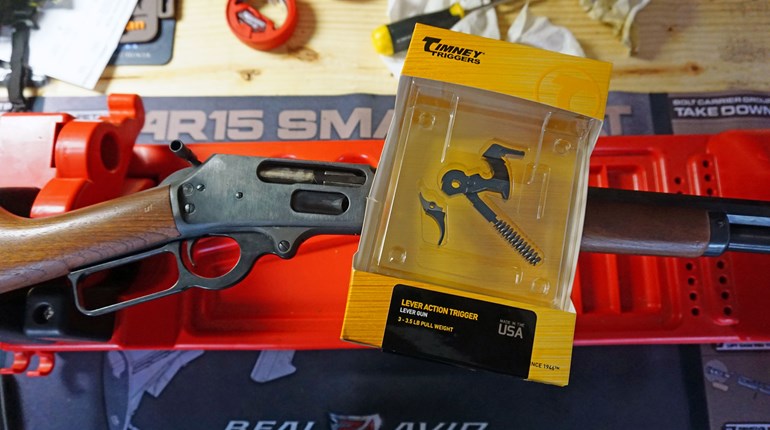
Volumes have been written about the ingredients that make an ideal trigger, some of it dubious. Rather relying on questionable sources, Shooting Illustrated asked experts who design and produce the best on the market today what modern shooters should look for in theirs.
Randy Lee, co-owner and CEO of Apex Tactical, warned us immediately our effort to find definitive answers would prove as frustrating as our last Sasquatch search. “Everyone will have a different opinion of what is good,” he responded in an e-mail. “I think it really depends upon the intended application and mechanical systems of the particular firearm … My personal definition of a good trigger is one that allows me to run a particular gun at speed without affecting the alignment of the bore to the target for repeated shots.”
“Triggers are also mechanisms where each shooter has a preference,” agreed Wilson Combat-sponsored shooting team member and owner of Shooting Performance, Mike Seeklander. “One might prefer a bit crisper release, one might prefer a bit of a ‘roll.’ Most shooters would appreciate the reset pressure, as long as the weight on the trigger does not increase significantly… A great trigger would be safe, as light as practical in the shooting application, offer positive reset and be consistent.”
“A good trigger allows you to become more accurate with your firearm. That is the only reason to replace your trigger.” Chris Ellis, Timney Trigger’s vice president of Marketing and Communications, explained. “After all, isn’t that what hunters, competition shooters and target shooters ultimately want—the advantage and fun of an accurate firearm?”
“In the broadest terms, a good trigger lets you achieve a firearm’s intended purpose without disruption or distraction,” responded Langdon Tactical Product Development Manager Mitchell Booth. “People often define triggers that meet that broad goal with the same set of descriptors: consistent, smooth, short, light and crisp. The reason that this description is almost universal is because most people find these attributes to be the least disruptive to their shooting process, whereas the opposite in any of these categories can be very disruptive.”
“Reset and its feedback only really matter to those who obsess over feeling the reset,” Scott Folk, COO and co-owner of Apex Tactical, wrote. “If you’re shooting at speed and paying attention to your sights vs. the trigger, the reset is inconsequential.”
Booth had a different response. “Reset, and especially reset distance, play a significant role in the process of shooting semi-automatic firearms quickly. If you don’t have to move your finger very far, then it will be easier to reset and pull the trigger for your next shot quickly without causing trigger freeze.”
The difference in opinions didn’t come as a surprise. Lee already issued that warning and Seeklander emphasized, “There is no one good trigger.”
There’s not even a consensus when it comes to simple parts. “Trigger shoes are mostly user preferences,” according to Ellis. “Curved, thin, wide, straight, semi-straight, etc., are personal preferences or may feel better based on feel.”
Folk was more straightforward. “The face of the trigger really doesn’t matter unless you make it matter.”
“A trigger that is not repeatable, every single shot will not allow you to learn the muscle memory of the trigger pull,” Ellis explained. “Consistency is the key to building a fine-shooting firearm.”
Folk provided what he thought were a few of the factors that contribute to that accuracy-robbing variation. “I’d have to say that ‘grit,’ ‘crunch’ and ‘hitches’ felt through-out the length of the trigger pull are your worst enemy and constitute a bad trigger.”
“Very heavy, not smooth, lack of positive reset, inconsistent, excess pre-travel or over-travel,” Seeklander added.
“A good pistol trigger must be drop-safe,” Folk emphasized. “I don’t care what application you intend the pistol for, or the experience level of the user, if the trigger can be articulated without an intentional pull of the trigger, somebody’s going to get hurt.”





































